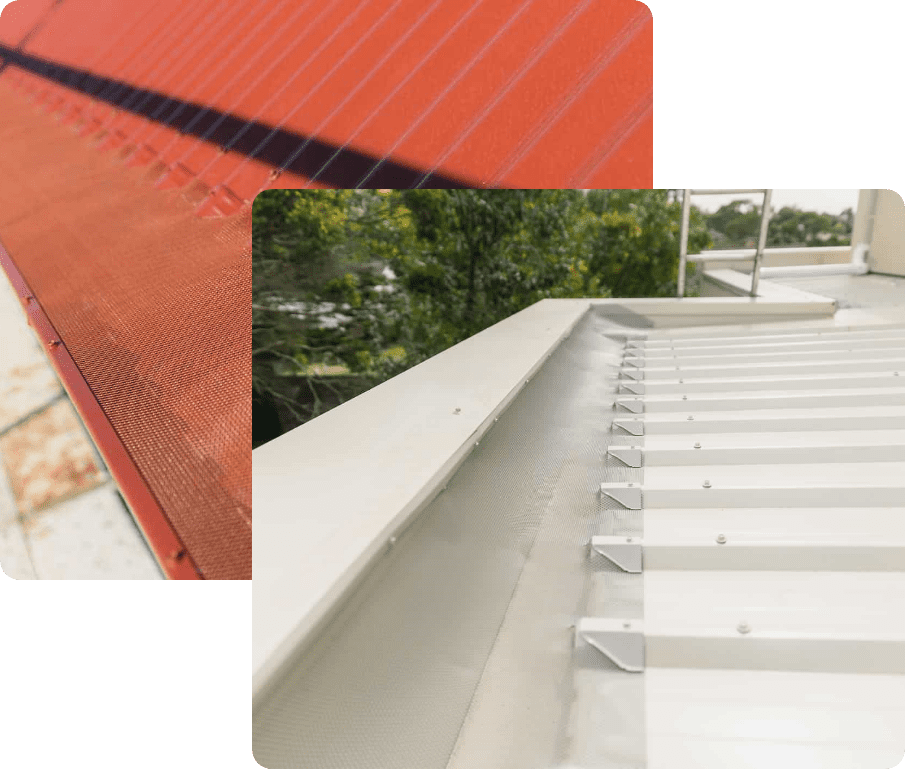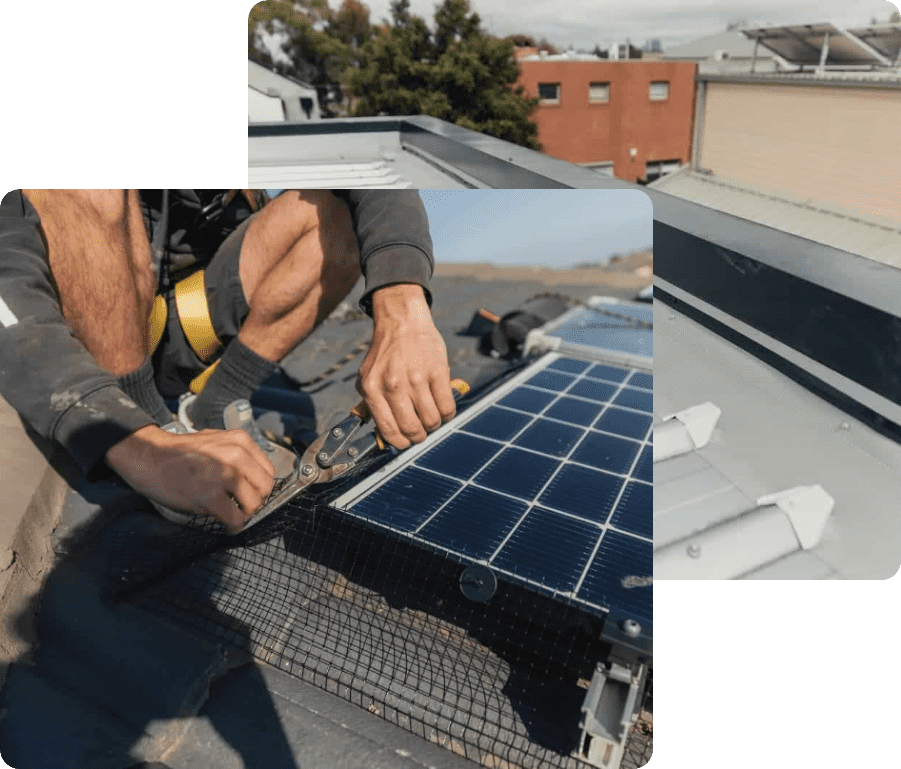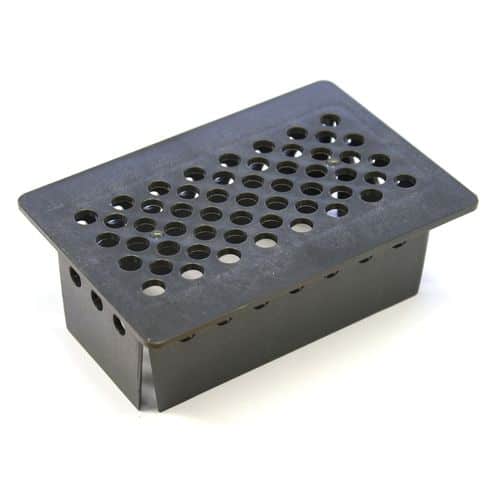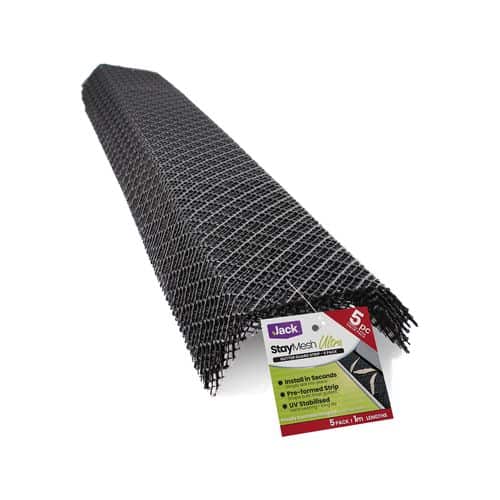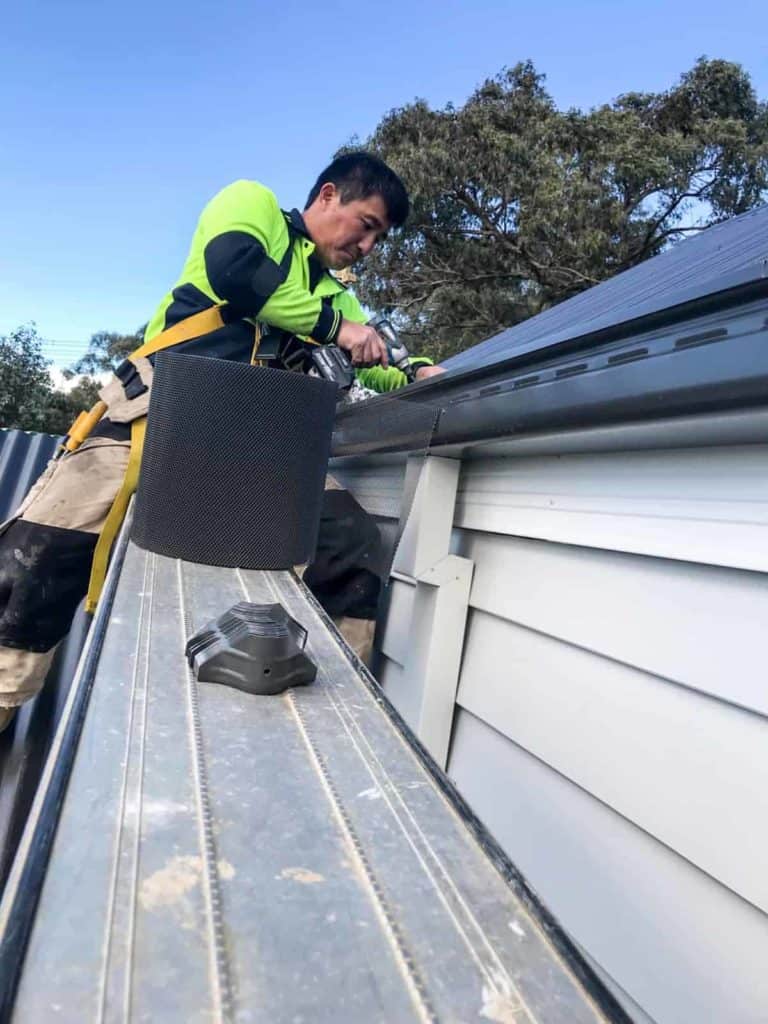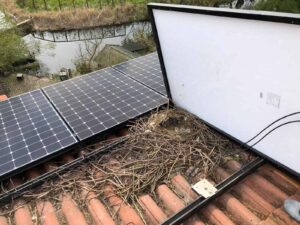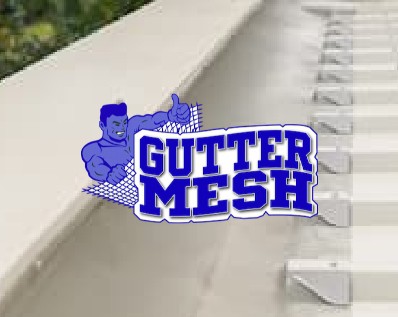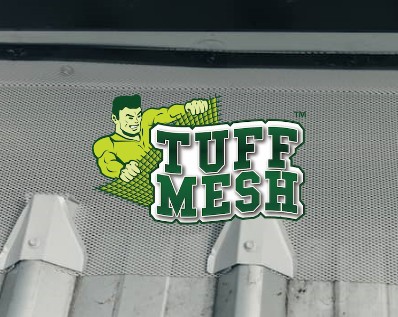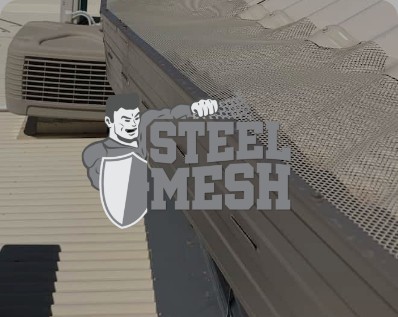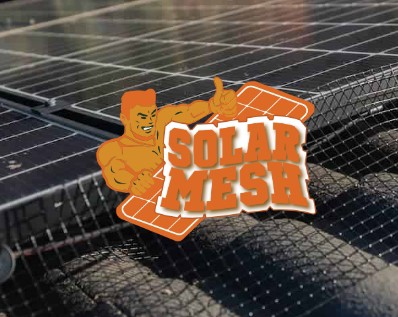Gutter guards are crucial for reducing gutter cleaning and protecting from debris, leaves, and pests that cause clogged gutters. Choosing the right gutter guard is essential for optimal performance.
In Australia, unpredictable weather is the norm; providing homeowners with effective gutter guards is even more vital. However, assisting homeowners in choosing the right gutter guard system is challenging, even for the best roofing contractors and gutter guard installers, as the market is saturated with inferior gutter guard types.
This article reveals the ten worst gutter guards homeowners should avoid, including an in-depth analysis of their limitations. Roof contractors & gutter guard installers use this information to empower your customers to choose an effective gutter guard solution for their gutter system.
What are the worst gutter guards in Australia?
- Generic Micro-mesh Gutter Guards
- Stainless Steel Mesh Panels
- Brush Gutter Guards
- Foam Inserts
- Plastic Mesh Covers
- Leaf Guards for Solar Panels
- Gutter Guard Downpipe Covers
- Plastic Ember Mesh
- Screen Guards
- DIY Kits with Insufficient Materials
1. Generic Micro-Mesh Gutter Guards
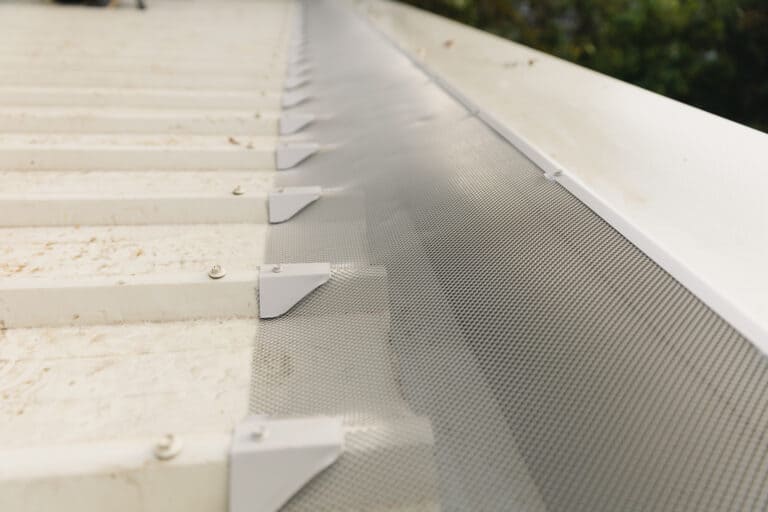
While micro-mesh gutter guards are touted as one of the best options for preventing debris from entering your gutters; not all are created equal.
Most micro-mesh guards refer to gutter guards commonly used in America as a solution for pine needles and fine debris. These gutter guards do not convert to Australian gutter systems; Australian and American gutter systems differ in materials, size & shape.
Generic or low-quality micro-mesh gutter guards often have flimsy frames and inadequate mesh, which allow debris to enter and rust over time. Additionally, water sheeting issues are common with micro-mesh gutter guards, as smaller holes prevent heavy rainfall from entering the rain gutters, instead sheeting over the guards and seeping into foundations.
Some people in Australia refer to ember guards as micro-mesh gutter guards. Ember guards have specified hole sizes of less than 2mm to protect from burning embers and pine needles. ScreenTech’s ember guards have directional holes and a water trough to prevent water sheeting and promote optimal water flow.
See our TuffMesh® range.
2. Stainless Steel Mesh Panels
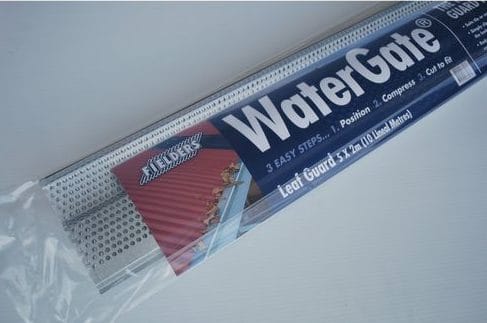
Steel is a highly effective and durable material in gutter protection, and Colorbond® Steel ember guards are specified for extreme bushfire protection areas. However, stainless steel gutter guard systems are cheap leaf guards with inferior grades of stainless steel; therefore could be more effective.
Stainless steel gutter guards are often uncoated, meaning they corrode quickly. They bend and reshape under weight and pressure, making them unsuitable for homes with possum activity or surrounded by trees with large branches, including gum trees.
Mesh panels or gutter covers sit above the gutter edge, making them dangerous in areas of Australia prone to strong winds or tropical storms. For these reasons, mesh panels are one of the worst gutter guards in Australia. Mesh panels come in predefined widths and lengths for standard gutters and may include fasteners.
3. Brush Gutter Guards
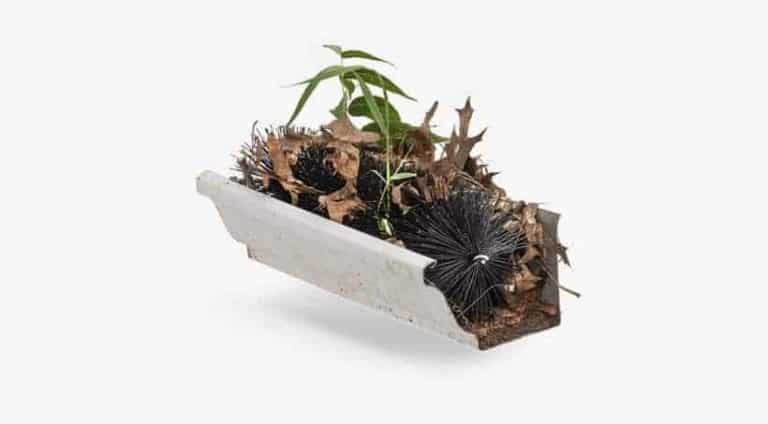
Brush gutter guards are cylindrical wires with perturbing bristles placed inside gutters to trap leaves and other debris while promoting water flow. Brush guards are effective bird-proofing measures against smaller birds nesting in the gutters and are easy to install. However, leaves often clog in the bristles requiring frequent maintenance and gutter cleaning.
While they can protect against smaller birds like mynas, larger birds, including gulls and pigeons, can easily remove them. Clogged brush guards also attract other unwanted pests, such as insects and vermin. Furthermore, they are unsuitable in bushfire-prone areas or homes with water tanks for potable water use, as they need to meet Australian Standards.
For these reasons, brush guards are one of the worst gutter guards in Australia.
Order a sample pack with commercial and standard gutter mesh samples.
4. Foam Inserts
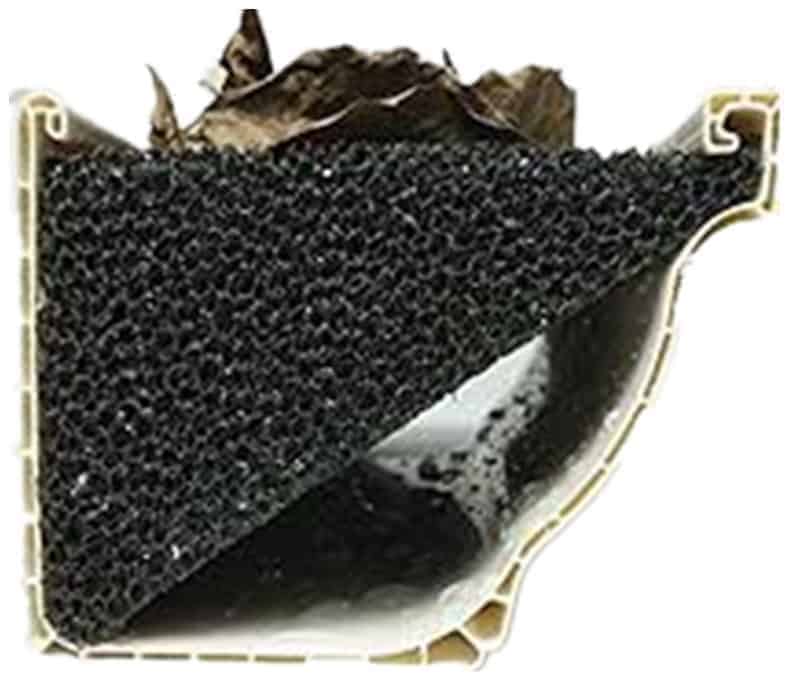
Foam inserts are made from porous foam, designed to fit inside your gutters to block leaves and allow water to pass through. Though it seems like an easy solution, foam inserts are one of the worst gutters with a limited lifespan, limited solution options and require more maintenance than other guards.
Contrary to the idea of a low-maintenance solution, foam gutter guards can require frequent cleaning as debris tends to accumulate on top of them. Foam guards have a limited lifespan, and exposure to the elements can cause them to break down and become brittle; the process is accelerated with high UV exposure.
During heavy rainfalls, foam gutter guards might not be able to handle the volume of water, which causes it to swell, leading to the gutters warping or pulling away from the house or potential overflow issues, potentially damaging your home’s foundation and landscaping. The foam can create a damp and sheltered space, which may become a breeding ground for insects and pests like mosquitoes. In areas prone to bushfires, foam gutter guards pose a fire hazard as the material is flammable and can catch embers.
Order a sample pack with commercial and standard gutter mesh samples.
5. Plastic Mesh Covers
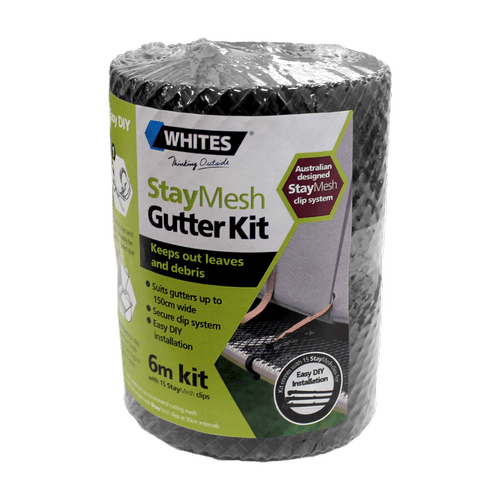
Plastic covers are a budget option found in stores like Bunnings. Plastic covers typically feature UV-stabilised materials and are often coated in black PVC. Plastic mesh is the least durable mesh compared to steel and aluminium. However, it is preferred for coastal home applications or galvanised roof applications.
Plastic covers make our list of the worst gutter guards as they become brittle and break with UV exposure. Unless professionally installed by a gutter guard installer, flexibility means they can sag and collect debris instead of protecting the gutter.
Need gutter guard installed?
6. Leaf Guards For Solar Panels
Leaf guards are unsuitable for solar panel protection as the small hole size reduces light penetration and increases moisture under the panels, leading to corrosion and affecting the panel’s effectiveness. Installing gutter mesh around the panels can interfere with the mounting hardware and potentially damage or jeopardise its stability.
For solar panel protection, Screen Tech recommends our solar mesh kits.
7. Gutter Guard Downpipe Covers
The primary purpose of downpipe covers is to prevent clogs by stopping leaves and debris from entering the downpipes. Cheap gutter guard downpipe covers can be easily dislodged by wind or clogged, making them ineffective.
Need gutter guard installed?
8. Plastic Ember Mesh
Plastic ember mesh is specified ember guard and is instead only plastic covers. Ember guards must be aluminium or steel to meet specifications. These products make our list of the worst gutter guards because plastic leaf guards cannot be used for ember protection.
9. Screen Guards
Screen gutter guards prevent leaves from entering and clogging the gutters. These guards are typically made of stainless steel or plastic and feature a mesh or screen with holes. They clip inside the gutters, allowing water to pass through into the gutter while blocking larger debris.
The hole size in the screen can vary, but most screen guards have relatively large openings allowing smaller debris such as pine needles and seeds. The design of these screen guards often requires removing the guards to clean the gutters. The process of locking and unlocking them for maintenance can be cumbersome and can also wear out the locking mechanism over time.
10. DIY Kits with Insufficient Materials
Gutter guard systems kits are sold as DIY or for wholesale professional installation. Many DIY kits must include more materials, have vague instructions, or are made with subpar materials. This leads to improperly installed or ineffective gutter guards.
Gutter guard kits should include the following:
- Gutter mesh (Colorbond® roof colours)
- Gutter trims (colour-matched to gutters)
- Roof profile/colour-matched gutter saddles/clips (not necessary for tile roof)
- Colorbond® Roofing Screws
When protecting homes, homeowners must invest in high-quality gutter guards. Avoiding these ten options and opting for a well-reviewed, reputable brand will save you time, money, and potential damage in the long run. Consult a professional for advice on your home’s best gutter guard system.
At Screen Tech, we firmly recommend an integrated mesh system as the most effective and durable gutter guard solution.
Want to know more? ScreenTech sends gutter guard samples and guides to architects and discusses projects and considerations.
ScreenTech’s TuffMesh® range is the best commercial-grade gutter guard in Australia. It is only available for professional installation and not as a DIY option.
Use our gutter guard estimation services to quote your next project, or call our expert team for advice and assistance for your gutter guard job.
Look no further than ScreenTech’s TuffMesh®, GutterMesh, SteelMesh and SolarMesh products. Our mesh suits Klip-Lok®, Timdeck® corrugated roof types and tiled roofs. Get in touch with a ScreenTech installation partner today.

